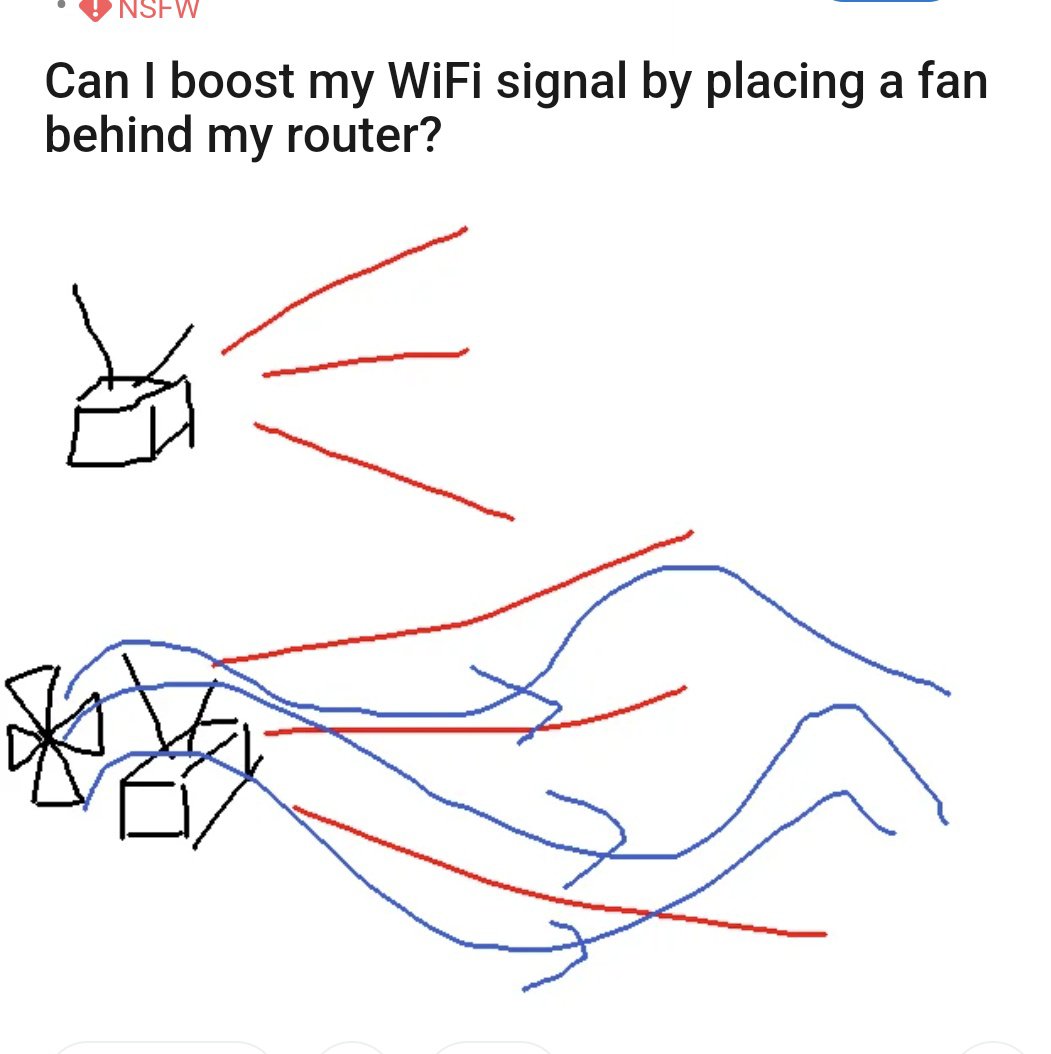this post was submitted on 12 Sep 2023
1166 points (97.7% liked)
Memes
44124 readers
1790 users here now
Rules:
- Be civil and nice.
- Try not to excessively repost, as a rule of thumb, wait at least 2 months to do it if you have to.
founded 5 years ago
MODERATORS
you are viewing a single comment's thread
view the rest of the comments
view the rest of the comments

The wifi beams come out in all direction. You can help boost the wifi by placing a mirror behind the router. Then the rays will be reflected back to you and not wasted.
I'm about 62% sure this is a joke...
Please help, I'm clueless about this kind of stuff.
Look up the DIY parabolic reflectors people used to use on their WiFi antennas, they did actually work! I used one and recorded a marked improvement in WiFi strength at the furthest point in my home that was previously a low connection quality spot.
Radio waves come out of an antenna and just go in every direction, so a router against your outer wall is wasting a lot of its energy just directed into the neighbour's house. If you can reflect some of that back in, you get improved signal reception. It's very cool :-)
But if waves transmit information, and the same information comes at all sides, won't the signals that bounce off the reflector arrive after the waves with a direct line and thus transmit redundant information?
Yes. They will.
When creating a reflector, you want to place it a specific distance from the focal point, so the waves are in sync with the waves going direct to the device, they will be offset one or two full wavelengths, but that hardly matters. About a half wavelength away from the emitter/antenna is ideal.
There's also a way to calculate the parabolic arc you want to make the signal very directional (the way a satellite dish works, but in reverse. Those dishes collect and concentrate the signal, in this case you want to redirect the emission in the same direction - think about it like a flashlight, where the majority of the light is in a small cone in the middle, but there's still some light going everywhere that isn't blocked by the mirror reflector dish in the flashlight).
There's a hundred different ways to get this done, tons of antenna designs to work with, but in general, wifi uses beamforming, which is a method to use multiple antennas that are transmitting the same signal, but they have the exact waveform slightly offset from eachother, which makes the signal much stronger in the complementary direction. It basically generates a beam the hard way. Wifi has gotten very good at doing this, so reflectors and directors, and all that fancy antenna design stuff isn't really required.
The only real improvement to be made, given wifi's current complexities, is to put in larger antennas; most wifi antennas are quarter wavelength or often smaller.... "Upgrading" to well matched full wavelength antennas may yield some benefit, but there's a lot of nuance there too. It's a deep subject so I'm just touching on how things go. I find it fascinating, I'm sure not everyone does.